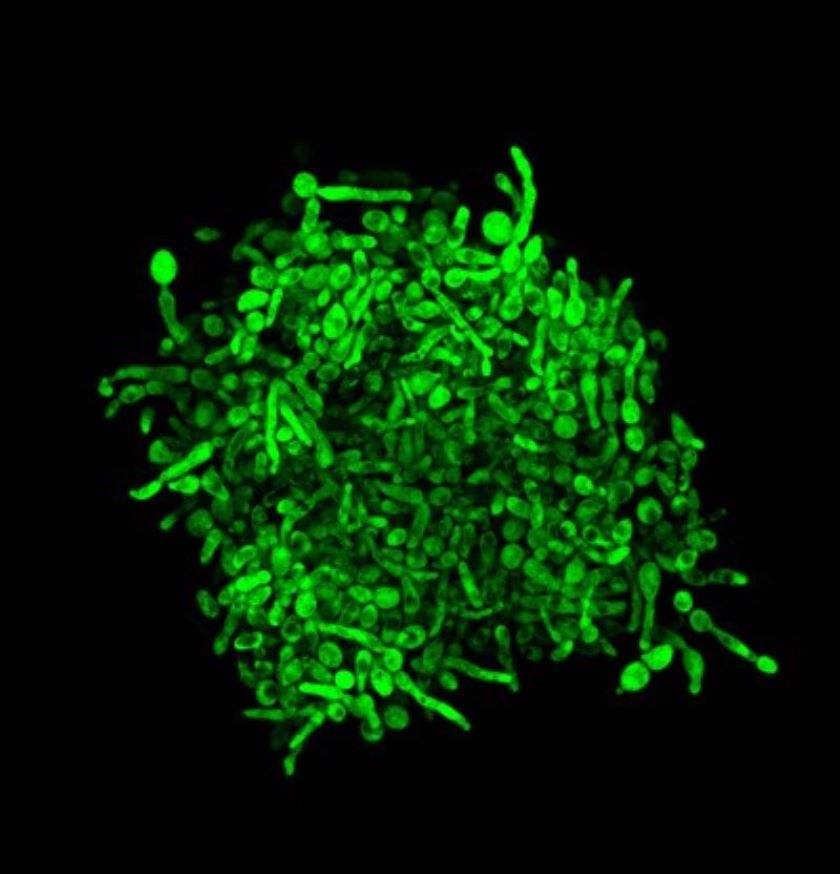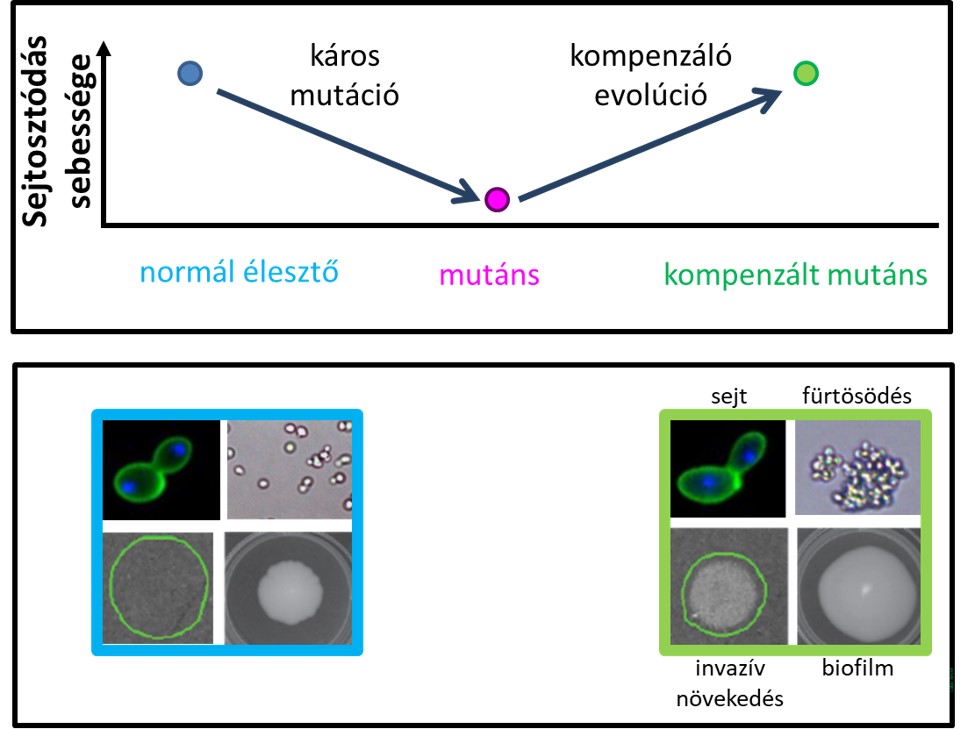Jun 24, 2022 | News
 In a recent publication, research groups led by Balázs Papp, Csaba Pál and Péter Horváth examined how new morphologies arise during the evolution of organisms. The raw material of evolution are mutations, genetic changes in the DNA sequences. There are many examples of how an organism can acquire a new trait useful in a given environment through beneficial mutations. In contrast, harmful mutations are traditionally considered to be dead ends of evolution that do not contribute to new traits. Researchers at the BRC have discovered a radically new evolutionary process in which harmful mutations have a constructive role. Their experiments in yeast have shown that ecologically and clinically important new traits can emerge as a by-product of deleterious mutations and secondary mutations that attenuate its harmful effects. The practical significance of the discovery in biotechnology is that it may open up a new strategy for the laboratory production of industrially useful proteins. The results were published in the prestigious journal Nature Ecology and Evolution.
In a recent publication, research groups led by Balázs Papp, Csaba Pál and Péter Horváth examined how new morphologies arise during the evolution of organisms. The raw material of evolution are mutations, genetic changes in the DNA sequences. There are many examples of how an organism can acquire a new trait useful in a given environment through beneficial mutations. In contrast, harmful mutations are traditionally considered to be dead ends of evolution that do not contribute to new traits. Researchers at the BRC have discovered a radically new evolutionary process in which harmful mutations have a constructive role. Their experiments in yeast have shown that ecologically and clinically important new traits can emerge as a by-product of deleterious mutations and secondary mutations that attenuate its harmful effects. The practical significance of the discovery in biotechnology is that it may open up a new strategy for the laboratory production of industrially useful proteins. The results were published in the prestigious journal Nature Ecology and Evolution.
 A blog post Summarizing this research is available in Nature Portfolio Ecology & Evolution Community: https://ecoevocommunity.nature.com/posts/which-doesn-t-kill-you-makes-you-stronger-but-does-it-change-your-image?fbclid=IwAR08cFiedIEowbP4kcizj2exZEd6F1AQql-eoz672mLHmrR1GmPRThvJTx8
A blog post Summarizing this research is available in Nature Portfolio Ecology & Evolution Community: https://ecoevocommunity.nature.com/posts/which-doesn-t-kill-you-makes-you-stronger-but-does-it-change-your-image?fbclid=IwAR08cFiedIEowbP4kcizj2exZEd6F1AQql-eoz672mLHmrR1GmPRThvJTx8
Congratulations to all involved in the study!